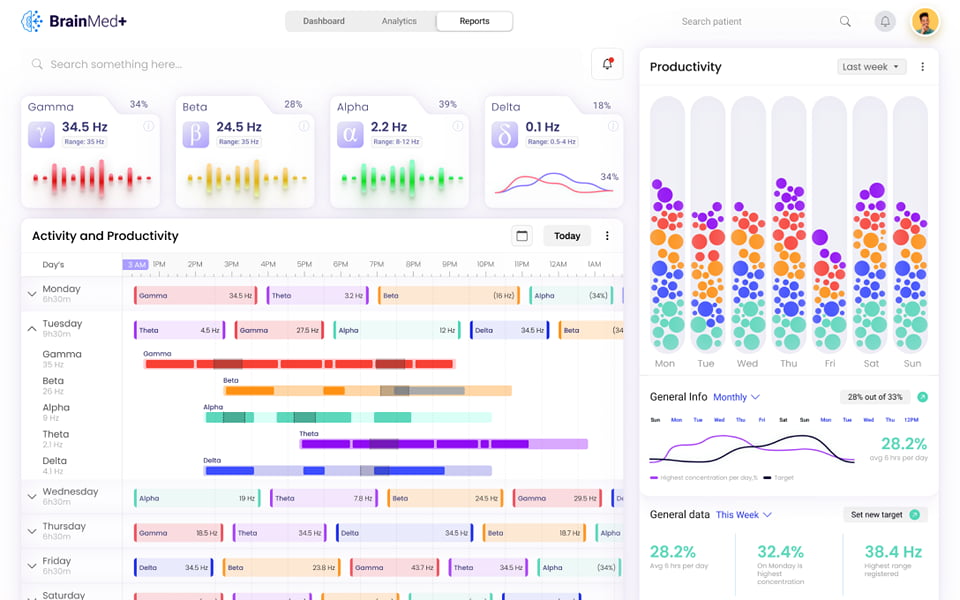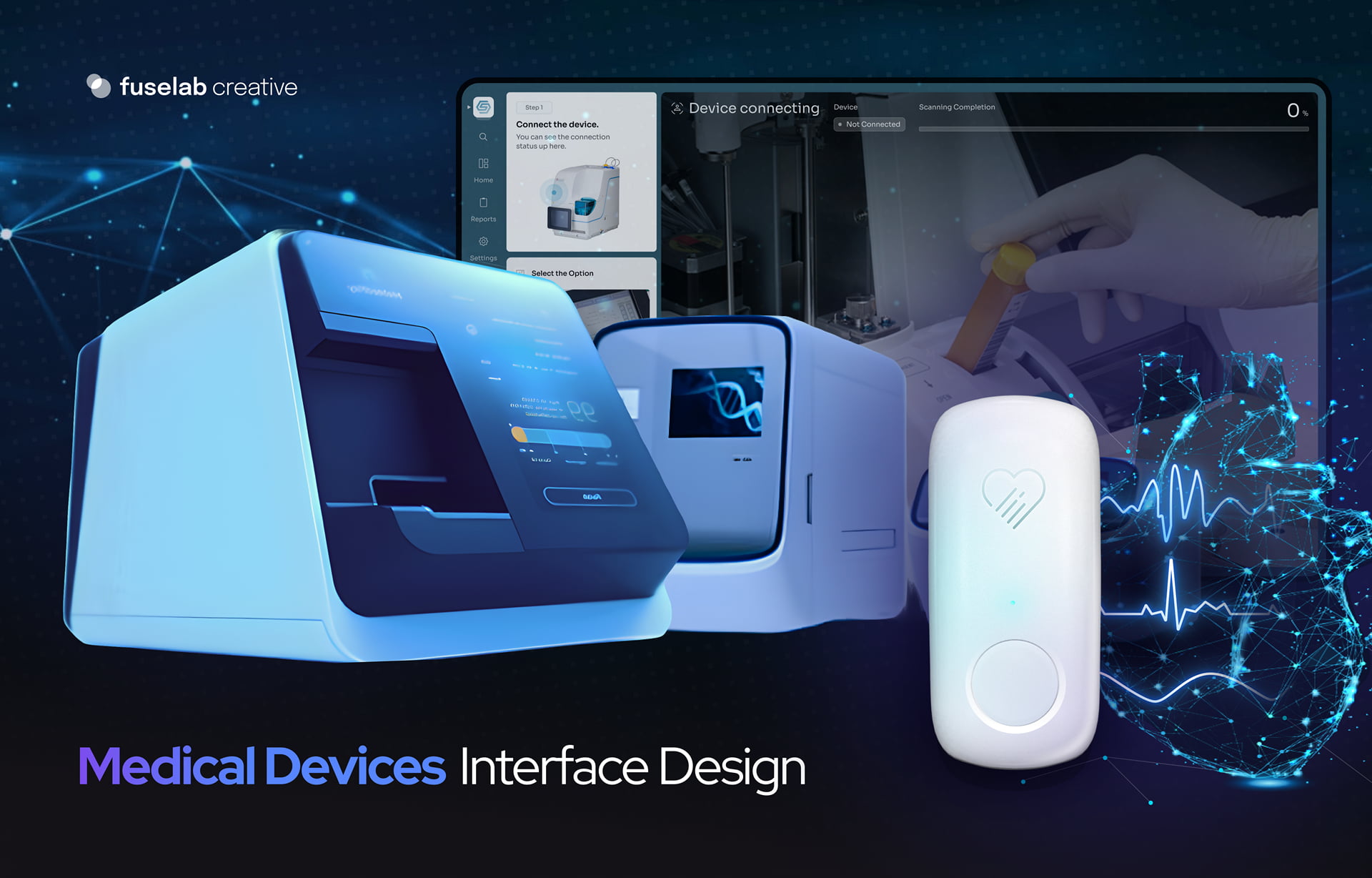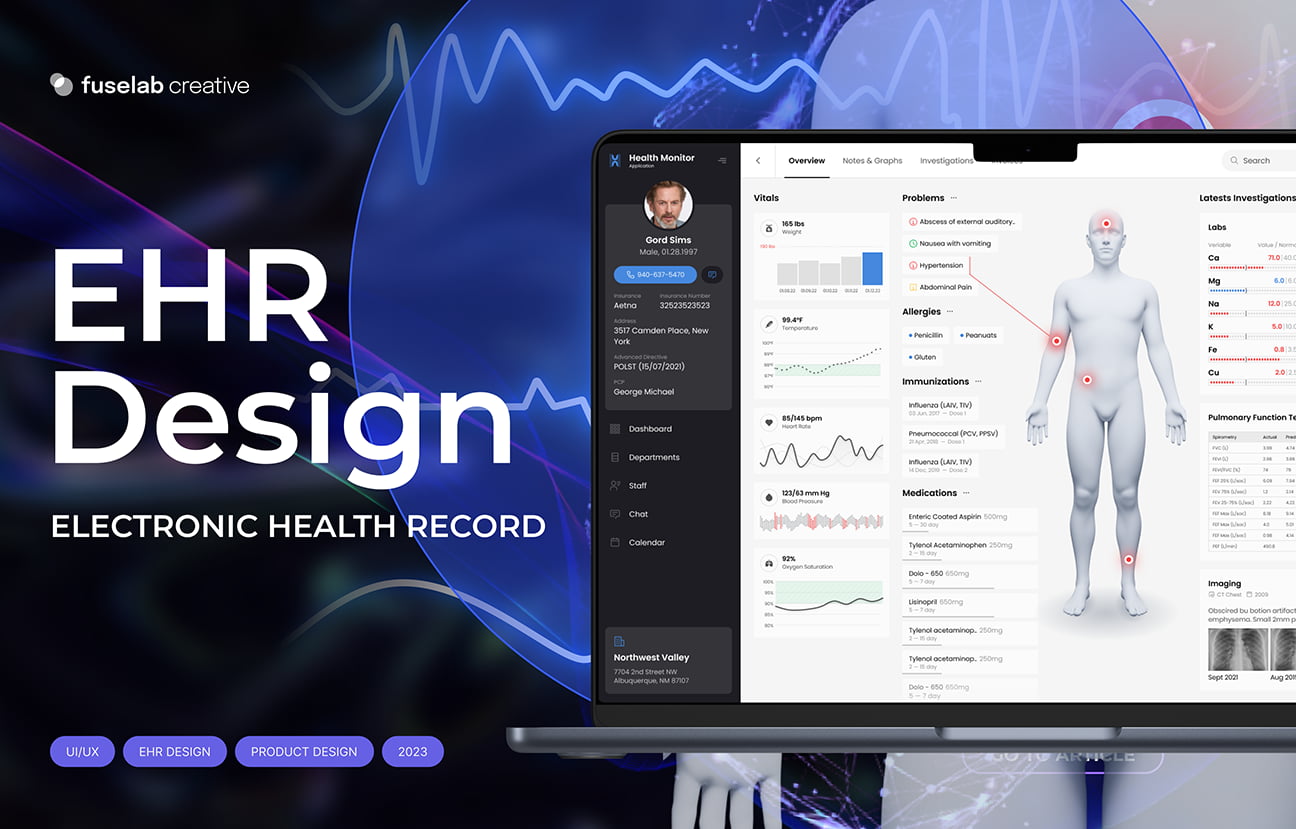User interface or UX/UI for medical devices is in some ways similar to other types of digital design but if you run a medical device company you realize quickly how this type of design is also an entirely different universe.

Keys of UI/UX
Design Success for
Medical Devices
There are few areas that all medical device interfaces produced by any design agency should be judged by. These are its usability, functionality, and how it complies with current medical regulations. Focusing on these areas paves the way to creating the most user-friendly, efficient, and compliant products possibly, which we all hope ultimately provide a new tool that has the capacity to improve patient care and public health as a whole.
Human-Centered Design
This common technique prioritizes the needs, preferences, and limitations of healthcare professionals, patients, and caregivers, and relies heavily on strategic and regular testing throughout the design process.
Intuitive Interface Design
Making use of familiar design patterns, clear navigation, and concise labeling to communicate what is possible ensures ease of use, especially in high-stress medical environments where users might be under pressure.
Compliance
This can be a tough one because it’s an area that is constantly evolving, but adherence to standards and guidelines from the Food and Drug Administration (FDA) and other regulatory agencies is crucial to maintaining safety and legality.
Consistency
Akin to human centered design, maintaining consistency in design elements, such as colors, typography, icons, and layout helps users quickly learn and navigate the system.
Usability Testing
The ongoing process of usability testing can quickly uncover usability issues, allowing for regular iterations on the initial design concepts proposed, and in the end, invariably, a better product is produced.
Accessibility
Accessibility isn’t just about compliance, it’s about creating a design and functional capacity to make your application easily usable by everyone of every level of ability or lack of ability.
Medical Device User
Experience Design
Medical device UX design centers around user-centered design (UCD), or what many people refer to as human centered design. Both approaches prioritizes the needs, abilities, and preferences of users throughout the design process. We all know that those involved in providing medical care have very little spare time to learn new technologies, which essentially means that every design we propose, above all, need to extremely intuitive and require almost no training.

Usability Testing for
Medical Devices
Medical device usability testing, if done well, reduces the need for training users, or at least the need for lengthy training sessions. Usability testing is particularly important if the product is going to be submitted for approval by the FDA. Healthcare digital products, such as electronic healthcare records systems (EHRs) need to include formative and summative usability testing results as part of their application for federal approval.

Medical Device GUI Design
The goals of almost all medical device graphic user interface design, or GUI, is to create something that is ultimately meant to improve patient outcomes while also adding a valuable asset to the medical providers suite of tools to use throughout their daily workflow. GUI designers for healthcare have an immense burden of adhering to FDA patient safety protocols and standards, while also somehow creating something enjoyable and easy for providers to use.

User Interface
Specification for Medical Devices
User interface specifications for medical devices need to be much more detailed than practically any other type of device interface. In other words, no one is going to die or sue your company for designing and developing a new video game or business management application, but when your goal is to serve patients in the healthcare environment there is an altogether different set of rules you must follow.

Related Services and Solutions
Contact Us
Fill out the form!
Medical User Interface Design Blogs
User interface design for the medical community is unlike, and possibly one of the most difficult challenges for any UX/UI team to take on.














